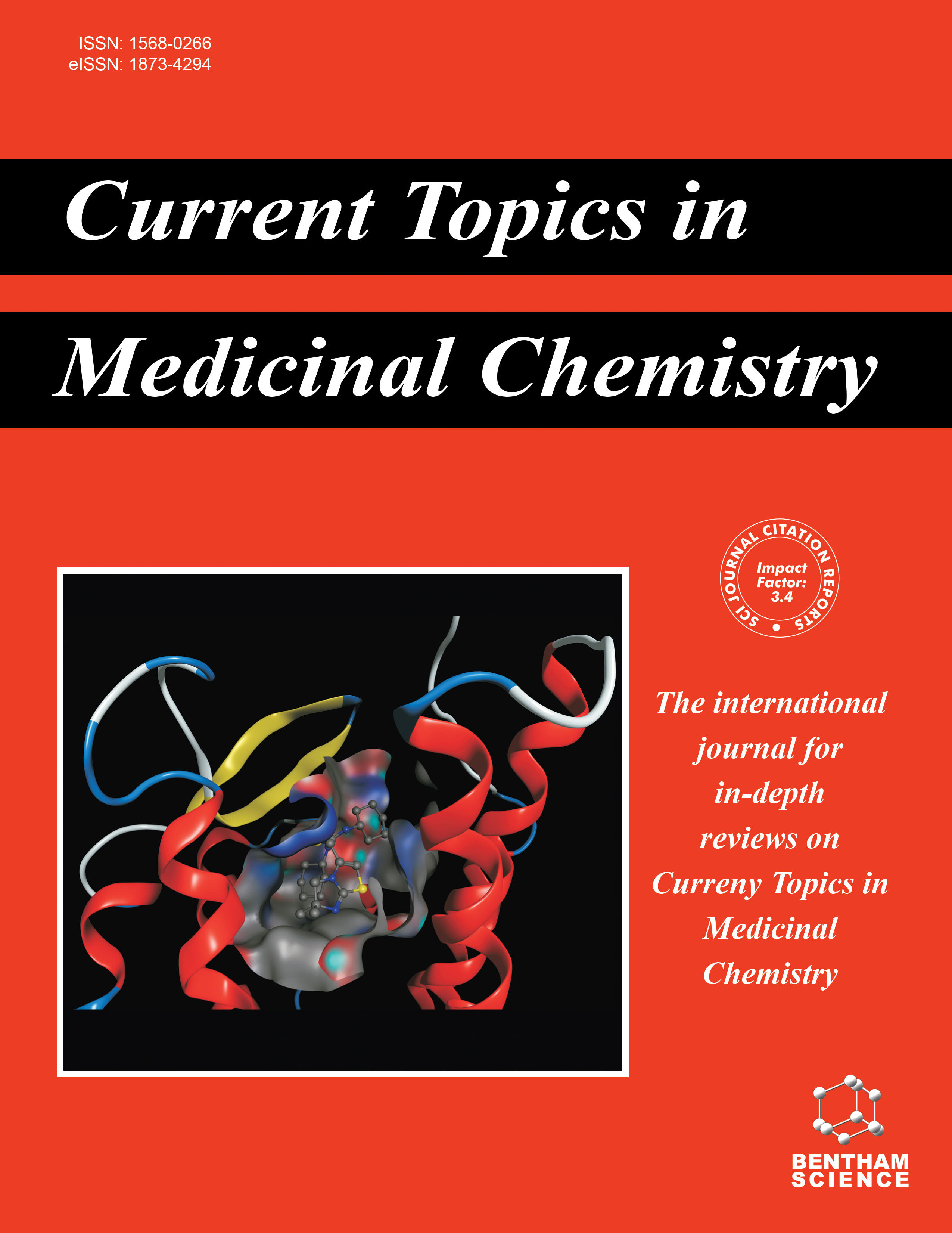- Home
- A-Z Publications
- Current Topics in Medicinal Chemistry
- Previous Issues
- Volume 3, Issue 4, 2003
Current Topics in Medicinal Chemistry - Volume 3, Issue 4, 2003
Volume 3, Issue 4, 2003
-
-
Medicinal Chemistry of Adenosine A1 Receptor Ligands
More LessAuthors: W. Soudijn, I. Wijngaarden and A.P. IjzermanIn this review the latest developments in ligand design for the adenosine A1 receptor are summarized. Novel series of agonists and antagonists are discussed, leading to the conclusion that ligands truly selective for the human adenosine A1 receptor are still scarce.
-
-
-
Pharmacology and Therapeutic Applications of A1 Adenosine Receptor Ligands
More LessAuthors: A.K. Dhalla, J.C. Shryock, R. Shreeniwas and L. BelardinelliAdenosine's diverse physiological functions are mediated by four subtypes of receptors (A1, A2A, A2B and A3). The A1 adenosine receptor pharmacology and therapeutic application of ligands for this receptor are the subjects of this review. A1 receptors are present on the surface of cells in organs throughout the body. Actions mediated by A1 receptors include slowing of heart rate and AV nodal conduction, reduction Read More
-
-
-
Medicinal Chemistry of Adenosine A2A Receptor Agonists
More LessAuthors: G. Cristalli, C. Lambertucci, S. Taffi, S. Vittori and R. VolpiniThe search for potent and selective A2A adenosine receptor agonists has been particularly fruitful in the early nineties. A series of 2-amino, 2-alkoxy, 2-alkythio-, 2-alkynyl-, and 2-alkenyl-derivatives of adenosine (Ado, 1) and N-ethylcarboxamidoadenosine (NECA, 30) have been synthesized and tested mainly on different model of rat A1 and A2A receptor subtypes. From these studies some ligands, such as CGS 21680 (33), H Read More
-
-
-
Medicinal Chemistry of A2A Adenosine Receptor Antagonists
More LessAuthors: B. Cacciari, G. Pastorin and G. SpallutoDue to the clearly demonstrated receptor-receptor interaction between adenosine A2A and dopamine D2 receptors in the basal ganglia, the discovery and development of potent and selective A2A adenosine receptor antagonists became, in the last ten years, an attractive field of research to discovery new drugs for the treatment of neurodegenerative disorders, such as Parkinsons disease.Different compounds ha Read More
-
-
-
Pharmacology of Adenosine A2A Receptors and Therapeutic Applications
More LessAuthors: B.B. Fredholm, R.A. Cunha and P. SvenningssonAdenosine A2A receptors were cloned about ten years ago and are known to be well conserved among mammals. Rather selective agonists and antagonists are available. In addition, two different knock-out mice have been prepared and extensively characterized. A2A receptors are highly enriched in the basal ganglia and on cells involved in inflammatory reactions. At these sites they are likely to play physiologically importa Read More
-
-
-
Medicinal Chemistry and Pharmacology of A2B Adenosine Receptors
More LessAuthors: R. Volpini, S. Costanzi, S. Vittori, G. Cristalli and K-N. KlotzThe low affinity A2B adenosine receptor, like any other adenosine receptor subtype, belongs to the super-family of seven transmembrane domain G protein-coupled receptors (7TMs GPCR) and is classified by the GPCR database in the family of rhodopsin like receptors (Class A of GPCR). It has been cloned from various species, including rat and human, and its sequences are highly similar across species, ranging from 85% ident Read More
-
-
-
Medicinal Chemistry of Adenosine A3 Receptor Ligands
More LessBy C.E. MullerA3 Adenosine receptors (ARs) exhibit large species differences. Potent, selective agonists for rat (e.g. Cl-IB-MECA, 5) and human A3 ARs (e.g. PENECA, 17, and analogs) have been developed during the past years. Potent, selective antagonists for human A3 ARs include the imidazopurinones PSB-10 (28) and PSB-11 (29), the pyrazolotriazolopyrimidines MRE-3005F20 (38) and analogs, and the dihydropyridine Read More
-
-
-
Pharmacology and Therapeutic Applications of A3 Receptor Subtype
More LessAuthors: P. Fishman and S. Bar-YehudaThe present study summarizes the biological effects elicit upon A3 adenosine receptor (A3AR) activation in normal and tumor cells. Anti-inflamatory response is mediated upon A3AR activation in neutrophils, eosinophils and macrophages via direct effect on cell degranulation or the production of anti-inflamatory cytokines. In basophils, which highly express A3AR, degranulation and mediator release upon receptor activation lead t Read More
-
Volumes & issues
-
Volume 25 (2025)
-
Volume 24 (2024)
-
Volume 23 (2023)
-
Volume 22 (2022)
-
Volume 21 (2021)
-
Volume 20 (2020)
-
Volume 19 (2019)
-
Volume 18 (2018)
-
Volume 17 (2017)
-
Volume 16 (2016)
-
Volume 15 (2015)
-
Volume 14 (2014)
-
Volume 13 (2013)
-
Volume 12 (2012)
-
Volume 11 (2011)
-
Volume 10 (2010)
-
Volume 9 (2009)
-
Volume 8 (2008)
-
Volume 7 (2007)
-
Volume 6 (2006)
-
Volume 5 (2005)
-
Volume 4 (2004)
-
Volume 3 (2003)
-
Volume 2 (2002)
-
Volume 1 (2001)
Most Read This Month
Article
content/journals/ctmc
Journal
10
5
false
en


